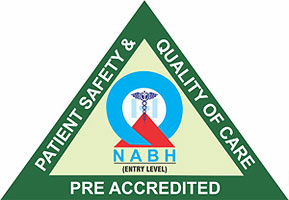+91-7291089674 (Bandra)
+91-7291092120 (Kandivali)





October 23, 2019 | Author: Admin
Artificial iris implantation is the process of removing the damaged natural iris and replacing it with the artificial iris. The defect in the iris may be due to a variety of reasons including the congenital deformities and the acquired abnormalities. The acquired iris damage may be caused due to trauma during surgery, penetration of the blunt object inside the eyes or surgical removal of iris due to cancer. The patient due to injury sometimes not only ends up damaging the iris but significant damage is caused in other vital parts of the eyes including cornea and lens. Thus, the surgeon, sometimes, while performing the iris implantation should also take care of the other issues as well. Researchers have also described the serious complications even in cosmetic iris implants.
The patient with iris damage experiences physiological as well as cosmetic problems including glare, light sensitivity, decreased visual acuity and impaired appearance. Various treatment options have been designed for iris damage. These include intraocular lenses with opaque bordering, iris prostheses, colored contact lenses, and corneal tattooing. Iris sutures are also used for reconstruction of pupil however the period is limited to 2 clock hours after the injury. The latest in this list is the artificial iris transplantation.
Iris implantation is a complex process and requires a comprehensive and detailed eye examination both injured as well as the healthy eye. It is required to produce an optimum quality iris for implantation. The artificial iris is implanted in the ciliary sulcus and it is up to the surgeon whether to use sutures as a means for fixing the iris. Various techniques are used to perfectly implant the iris. It is also to be noted that in most cases the damaged iris is not treated.
Although various companies are trying hard for years to get the FDA approval for the artificial iris implantation device. Many of these devices were stuck either due to a lack of data or due to financial constraints. Notable examples of such cases are the iris device made by Ophtec and Morcher. Ophtec had submitted loads of data related to the clinical trials ofthe Ophtec Model 311 device to the FDA. However, the device never saw the light of the market because of the unavailability of the manufacturer of raw material which was used in this device. The organization submits in the USFDA that the manufacturer has closed his facilities. USFDA rejected the file by stating that in the absence of an audit of the raw material manufacturer, they are not in favor of approving. The device made by Morcher was delayed due to financial constraints and now is on the right track to get the approval from USFDA.
Recently in 2018, HumanOptics CustomFlex Artificial Iris is the first prosthetic iris approved in the United States, that will correct the missing or the damaged iris in both adults and children. The approval of iris implantation will help the patients to permanently get rid of the colored lenses they are using. The device is crafted as per the size and requirement of the individual patients. It is a foldable device manufactured with the medical-grade silicone. Sutures may or may not be required for keeping the artificial implants in its place. The clinical study indicates that the iris implant surgery poses a significant risk to people untreated chronic glaucoma and retinal detachment,abnormal or damaged blood vessels on the iris, and chronic infection. The procedure is also contraindicated in pregnant women.
Available in fiber and fiber-free model, implantation of this device is not covered under the insurance scheme in the United States. It is also to be noted that due to the involvement of highly complex surgery and associated complications, the surgeons who are the part of the team conducting the clinical trials are the only ones to perform the commercial iris implant surgery. The surgeons who have to conduct these complex surgeries have to show that they have hand-on experience and required expertise in performing such complicated surgeries. The complication further increases because the iris implant surgery is not done on clean eyes. The surgeons who wish to perform these complex surgeries should have to undergo training for a period in which they are trained to perform surgeries on model eyes in context to iris replacement procedures.
Patients with clean eyes i.e. those who have clean lenses are the only candidates excluded from undergoing iris implant procedures. The ideal candidate for iris replacement surgery is the one with large iris defect which cannot be closed with sutures, and the patient should have a cataract or be aphakic or pseudophakic. The process of implantation is different for each patient as the condition of eyes and prior surgical history is different for each patient. While the fiber-free model does not require a suture and injected in the ciliary sulcus with proper capsular support, the procedure requiring the suture to make use of the fiber-containing device. The diameter of the device is such that it perfectly gets attached without any trephination. Sizing is critical in the case of the fiber-free model as they must fit themselves as compared to the fiber-containing device which is sutured.
Christian Mayer, Tamer Tandogan, et al, Artificial iris implantation in variousiris defects and lens conditions, J Cataract Refract Surg 2017; 43:724–731
Lin S.R, Miller K.M., Lessons Learned from Implantation of Morcher 50D and 96S Artificial Iris Diaphragms, Case Rep Ophthalmol 2017;8:527–534
Kevin M. Miller,Alan Kuo et al, Safety and efficacy of black iris diaphragm intraocular lens implantation in eyes with large iris defects: Report 4, Journal of cataract and refractive surgery, June 2018Volume 44, Issue 6, Pages 686–700
Sunita Chaurasia, Devastating complication of cosmetic iris implants, Indian J Ophthalmol. 2017 Aug; 65(8): 771–772.